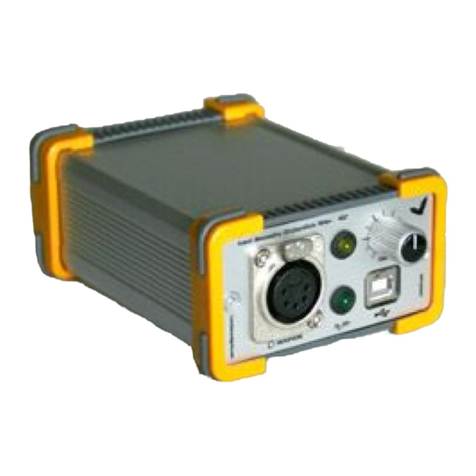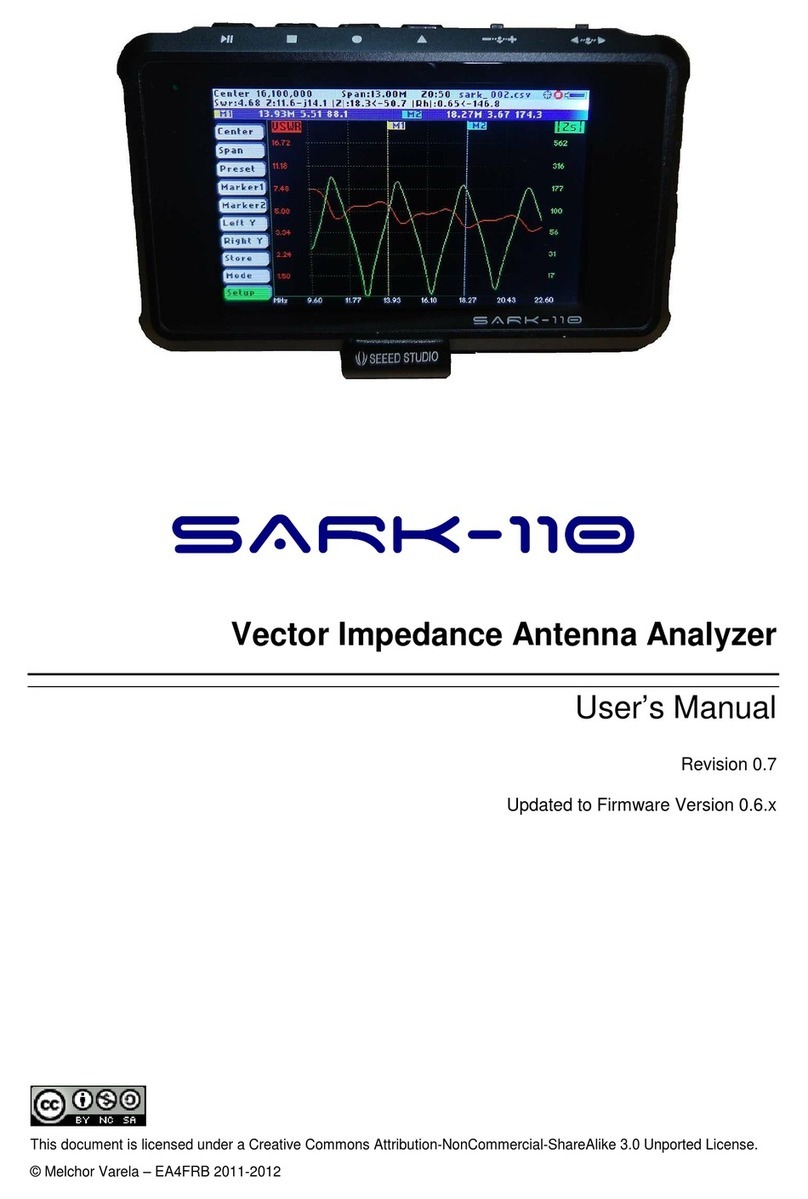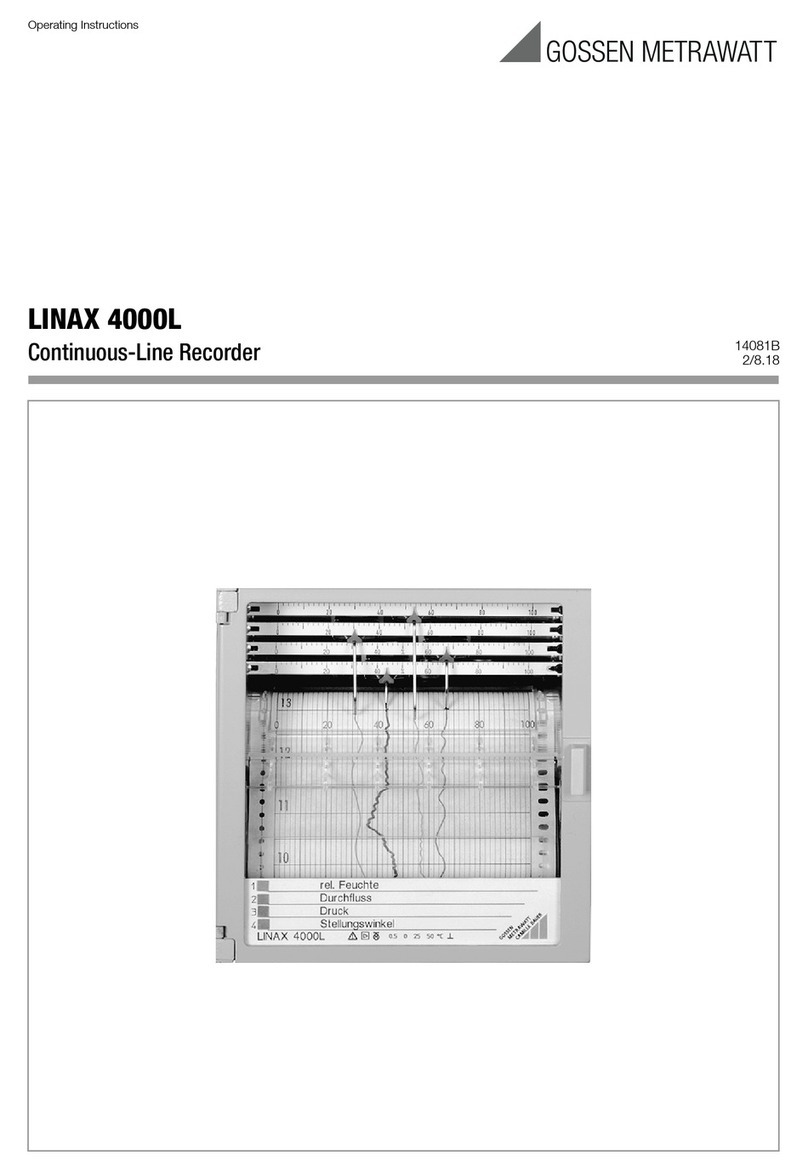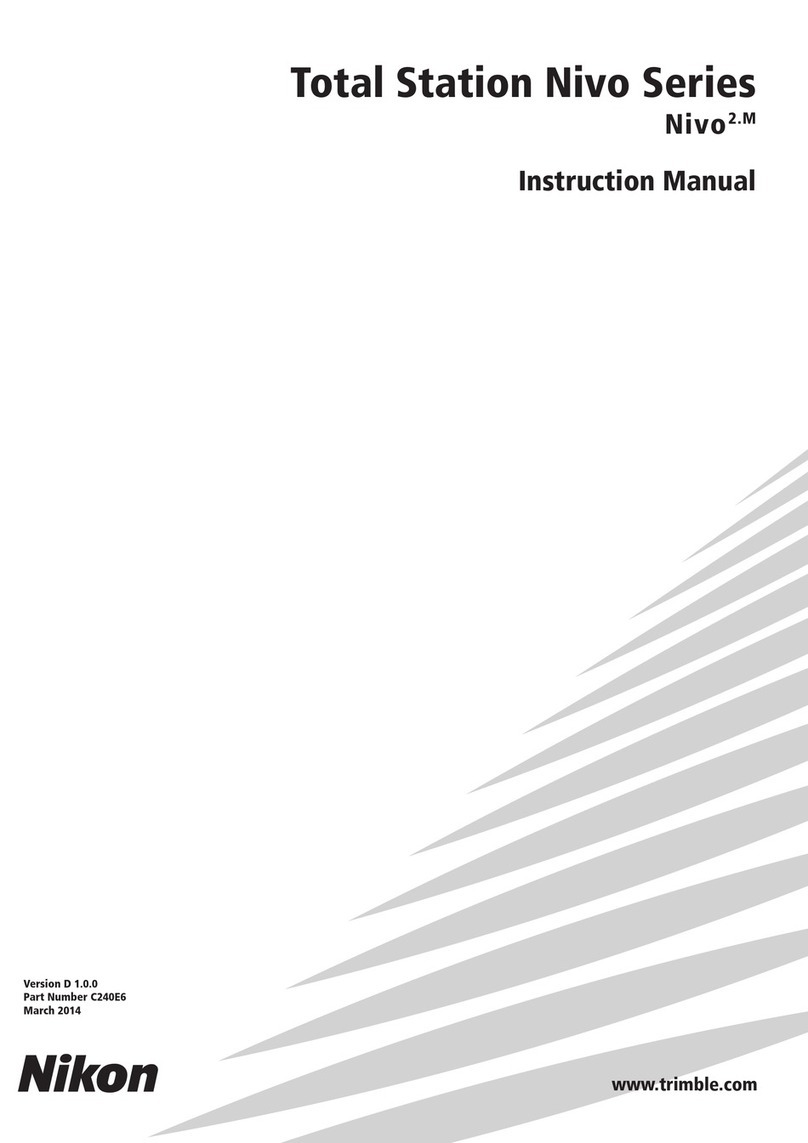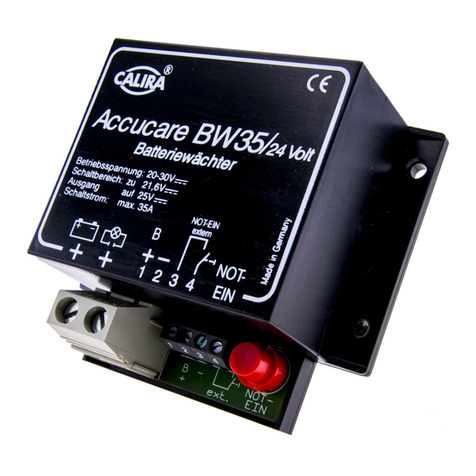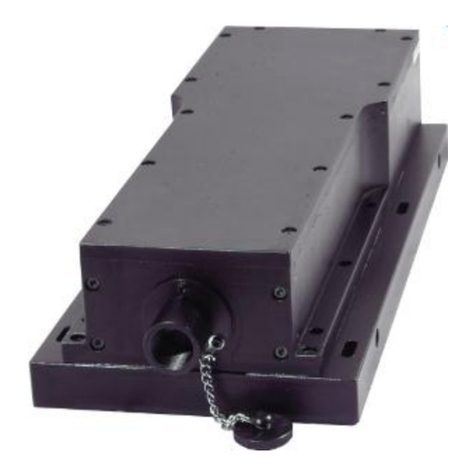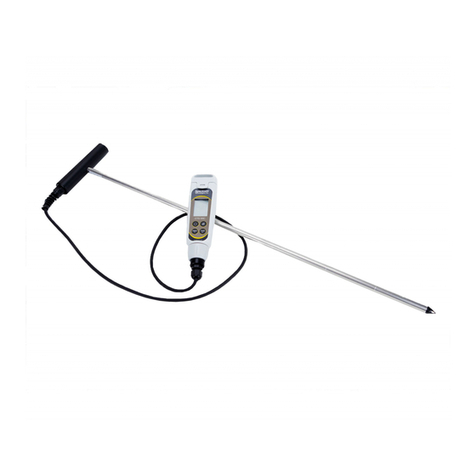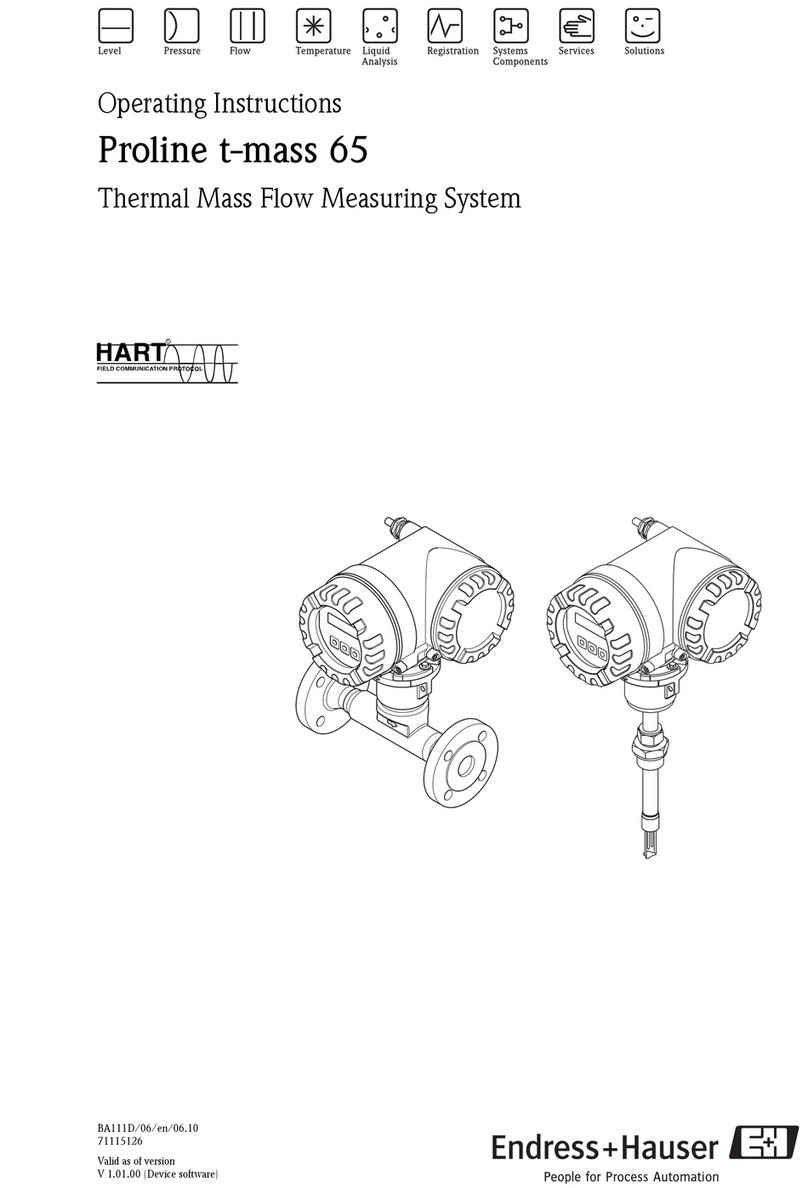DENGENSHA WS-100 User manual

Document No.: IN-4985E
Electrical Engineering Dept.
INSTRUCTION MANUAL
Hand-held weld scope
MODEL: WS-100
(Conform to CE/UL)
Original instructions
The instruction manual must be carefully
read for proper machine operation.
No person is allowed to install, conduct test run of, operate, maintain, repair the
machine or do similar works, without having well understood what the manual
refers to.
The improper operation with inadequate knowledge may cause serious accident.
Incidentally, the manual must be kept at a place accessible to any of the person
concerned.
Please inquire an uncertain point of our Sales Department/each office.
1-23-1 Masugata, Tama-ku, Kawasaki-shi, Kanagawa-ken, JAPAN
TEL:+81-44-922-1121/FAX:+81-44-922-1100
DENGENSHA MFG.CO.,LTD



ii
DENGENSHA
Instruction manuals
Hand held weld scope unit instruction manual (this document)
This manual provides instructions regarding Hand held weld scope, descriptions of the Hand
held weld scope functions, installation method, notes of troubleshooting against errors and
maintenance.
Weld Data Manager instruction manual OPI-0002
This manual provides instructions regarding ‘Weld data manager’, descriptions of the ‘Weld
data manager’ functions, installation method.

iii
DENGENSHA
Contents
1. SAFETY INSTRUCTIONS AND CONSIDERATIONS...................................... 1
1 - 1. Product safety labels and symbols..................................................................................1
1 - 2.Application of the equipment and safety ........................................................................2
1 - 3. Safety considerations......................................................................................................2
1 - 4. Safety during operation ..................................................................................................2
1 - 5. Electrical safety ..............................................................................................................3
1 - 6. Safety items on maintenance work.................................................................................4
1 - 7. Accident prevention........................................................................................................5
2. WARRANTY and REPAIR-AVAILABLE PERIOD ............................................9
2 - 1. Warranty .........................................................................................................................9
2 - 2. Repair-Available period..................................................................................................10
3. Overview ...............................................................................................................11
3 - 1. Overview of Hand held weld scope................................................................................11
4. Specification..........................................................................................................11
4 - 1. Hand held weld scope WS-100 specification.................................................................11
4 - 2. Equipment appearance and name of each part................................................................13
5. Connection.............................................................................................................14
5 - 1. Current sensor (toroidal coil)..........................................................................................14
6. LCD display...........................................................................................................15
6 - 1. Four display items ..........................................................................................................15
7. Operation...............................................................................................................17
7 - 1. Operation tree.................................................................................................................17
7 - 2. Numerical screen (main screen).....................................................................................18
7 - 3. Numeric screen in current measurement mode...............................................................18
7 - 4. Numerical screen in pressure measurement mode..........................................................22
7 - 5. Graphic screen in current measurement mode................................................................22
7 - 6. History screen.................................................................................................................22
7 - 7. System screen.................................................................................................................23
8. Cable connection ...................................................................................................25
8 - 1. Connection of each cable................................................................................................25
9. Battery ...................................................................................................................26
9 - 1. Mounting battery............................................................................................................26
9 - 2. Battery charging instructions..........................................................................................26
9 - 3. Notes...............................................................................................................................27
9 - 4. Use of other type battery ................................................................................................27
9 - 5. Long term storage...........................................................................................................28

iv
DENGENSHA
10. Maintenance.........................................................................................................28
10 - 1. Instructions in case of maintenance..............................................................................28
11. Parts List..............................................................................................................28
11 - 1. Consumable parts..........................................................................................................28
11 - 2. Other parts and options.................................................................................................28

v
DENGENSHA

1
DENGENSHA
1. SAFETY INSTRUCTIONS AND CONSIDERATIONS
IT IS IMPERATIVE THAT:
Any person involved with the installation, functional testing, operation, maintenance and repair of this
machine must start the work with complete understanding of the machine after reading this
INSTRUCTION MANUAL carefully, to help prevent personal injury or damage to the equipment.
DENGENSHA equipment has been designed and produced with due consideration to safety. Be sure to
observe the instructions in this instruction manual. Failure to comply with these instructions may cause
personal injury.
1 - 1. Product safety labels and symbols
In this manual and the machine, the following labels or symbols are used.
(1) General warning sign
This is the general warning sign. It is used to alert the user to potential
hazards.All safety messages that follow this sign shall be obeyed to
avoid possible harm.
(2) Hazard severity panels
DANGER
Indicates a hazard with a high level of risk which, if
not avoided, will result in death or serious injury.
WARNING
Indicates a hazard with a medium level of risk
which, if not avoided, could result in death or
serious injury.
CAUTION
Indicates a hazard with a low level of risk which, if
not avoided, could result in minor or moderate
injury.
(3) Prohibition sign
A black graphical symbol inside a red circular band with a red diagonal
bar defines a safety sign that indicates that an action shall not be taken or
shall be stopped.
(4) Mandatory action
A white graphical symbol inside a blue circle defines a safety sign that
indicates that an action shall be taken to avoid a hazard.

2
DENGENSHA
1 - 2. Application of the equipment and safety
This equipment is intended for use, exclusively, for the purpose specified in associated
documentation (instruction manual, specification sheet). Employment of the equipment for any
other purpose is regarded as a deviation from the intended application.
Improper usage other than intended may cause:
(a) Serious injury or death,
(b) Damage to this and/or other equipment
DENGENSHA equipment uses the latest state of the art technology and is made to operate safely
and reliably. The equipment should be used only for the intended purpose. Dengensha will not
accept liability for misuse of the equipment.
1 - 3. Safety considerations
We emphasize that DENGENSHA MFG.CO., LTD. disclaims all liability for damage and
malfunctions resulting from non-compliance with the following instructions in particular:
(a) The instruction manual must be read and strictly understood. If there are any questions,
contact our business department and/or each office.
(b) Unauthorized conversion and/or modification affecting the safety of the equipment are not
allowed.
(c) The equipment may not be equipped or operated with products of other manufacturers
whose use is not expressly permitted in the associated manuals.
(d) For the items(b)and(c), consult with our business department/each office on safety.
1 - 4. Safety during operation
CAUTION
(1) Injury prevention from electrode or clamping force
Resistance welding machine generally uses electrode pressurizing force or clamping
force of several thousands Newtons or more.
Since this large force is dangerous, do not put hands, fingers, or any part of the body
between the electrodes, and between the clamps. Failure to observe this warning can
cause serious injury. The same warning applies to the electrodes when opening.
A guard is provided to protect against a pinch point when the upper electrode opens.
Do not put hands, fingers or any part of the body between the upper electrode and the
cylinder body. Operation should not occur unless the guard is in place.
CAUTION
(2) Wearing safety gear
Spark or spatter that is produced during welding operation may cause eye injury.
Since it is difficult to eliminate spark or spatter completely, it is necessary to put on
protective glasses, helmet, gloves and non-combustible working clothes to safeguard
against splash and spatter.

3
DENGENSHA
CAUTION
(3) Prevention from burns or fire
Spark or spatter produced during welding operation or hot parts just after being
welded cause burns. Observe the following precautions and install fire extinguishers
close to the weld working area in case of an emergency.
(a) Remove flammable substances so that Spark or spatter do not fall on them or
drape them with a non-combustible cover.
(b) Do not perform welding work near the flammable gas.
(c) Do not bring hot parts immediately after being welded, close to the flammable
materials.
(d) Do not touch the parts just after being welded with bare hands. Even if they are
not red, the temperature may be very high, causing a burn.
(e) Keep any personnel other than workers away from a place where spark or spatter
is produced.
(4) Noise protection
Measure noise level of this equipment and its surroundings area. If the level is in excess
of 85db, use appropriate hearing protection.
1 - 5. Electrical safety
DANGER
(1) In order to aroid electrical shock
In order to avoid electrical shock, be sure to observe the following items:
(a) Do not touch the parts bearing electrical charges other than secondary conductor.
Failure to observe this may result in a fatal electrical shock or severe burns.
(b) Do not touch both ends of secondary conductor simultaneously. Failure to
observe this may result in a slight electrical shock.
(2) Connection to the power supply
The equipment should be connected properly to the power supply as per the instruction
manual. The power supply work should be carried out according to local laws and your
in-house standards.
(3) Qualifications for electrical work
Voltage of approx. 440V is supplied to the equipment according to the specification
(Higher voltage may be used depending on models. Refer to the specification).
Educated, trained and qualified personnel1) with regard to the potential hazards arising
from these dangerous voltages should be assigned, especially, to electrical work for
installation, maintenance and repair works.
Note:1) For example, personnel who possess qualifications for electrical work or
authorized customer employee.

4
DENGENSHA
(4) Grounding work
An earth terminal is provided with the equipment for safety.
A person qualified for conducting the electrical work should carry out the grounding work
according to the local laws and in house standards.
(5) Provision of properly sized conductors
The customer is responsible to provide properly sized conductors for the incoming power
feed to the welder. Do not use wire of insufficient capacity or damaged/exposed wires.
Failure to observe this may cause fire due to overheated electrical wire and electrical
shock or current leakage.
(6) Electric wire connection
The connection terminal of the electrical wire should firmly be tightened and insulated. In
case of loose connection, the connection may become overheated and cause fire, and
insufficient insulation may cause electrical shock or current leakage.
1 - 6. Safety items on maintenance work
DANGER
(1) Promotion of safe system start-up and shut-down
There is a possibility of causing extremely dangerous condition when the sources of
power supply, pneumatic and water are turned on without warning to a worker during
maintenance/repair work. Systems that promote safe system start-up and shutdown
should be provided for personnel safety.
(2) Before performing maintenance work
DANGER
Before performing any maintenance and/or repair work, including cleaning, it must be
ensured that:
(a) The equipment has been disconnected, using a lock-out/tag-out procedure, from
all power supplies for welding, control and power.
(b) Perform plant lock-out/tag-out procedures on power sources of the equipment.
CAUTION
(c) All sources of pneumatic pressure and cooling water have been
locked-out/tagged-out.
(d) Residual pressure of all pneumatic circuits and cooling water circuits have been
relieved.

5
DENGENSHA
(3) Perform maintenance work
Installation, maintenance/inspection, repair work should be performed by trained
qualified personnel2) according to the instruction manual for safety reasons.
Note:2) Qualified personnel, authorized by the customer, who have received
manufacturer’s or customer’s in-house training and have clear understanding of the
equipment in question.
(4) Perform periodic maintenance
It is necessary to perform periodic maintenance and inspection of the equipment as
described in the manual.
(5) Water or pneumatic hoses
When the customer prepares to install water, or pneumatic hoses to the welder, make sure
they will sufficiently bear the pressure.
Possibilities of danger occur when these hoses have insufficient resistance to pressure or
are deteriorated or damaged, periodically perform maintenance and inspection and repair
the deteriorated or damaged parts before using the equipment.
(a) When hoses bursts or disconnected, the hose may act violently or the equipment may
operate unexpectedly.
(b) When a water hose bursts developing a leak, there is a possibility of deteriorated
insulation of the electrical circuit or deterioration of the control equipment and/or
current leakage.
1 - 7. Accident prevention
(1) Cooling water used for welding machine
Be sure to observe the following items for safe operation, to prevent accident and
maintain proper functioning of the equipment.
(a) Use water of the following quality or equivalent:
i) Rate of electric resistance:More than 5,000Ω・cm for thyristor cooling water.
ii) Less deposit in water.
iii) Ammonium ion content must be less than 1ppm.
Smaller resistance of water may cause current leakage. The cooling water with large
deposits may clog a circuit to degrade the circuit function, lowering the cooling capacity
and causing the circuit to malfunction or fail.
Cooling water containing a large amount of ammonium ions may have the possibilities of
corroding copper or copper alloy components on the cooling circuit and create water leaks,
leading to current leakage and electrical shock or electrical breakdown of welding
transformer that can causes a fire on the equipment.
(b) When the cooling water is turned off, be sure to turn off the welding power supply.
Leakage current flowing for a long time may heat and damage thyristors,
depending on quality of cooling water.

6
DENGENSHA
(c) Amount of cooling water prescribed in the specification of the equipment should be
provided in the following manner. It is also important to keep water temperature
prescribed in the specification in order to maintain the cooling capacity as well as
water quantity:
i) Maintain a given water pressure prescribed in the specification.
ii) Check the water flow periodically to prevent clogging & overheation conditions.
iii) Perform maintenance of cooling water circuit as prescribed in the specification.
When cooling capacity is deteriorated, the equipment may generate faults or a fire may
generate due to overheated components such as welding transformers, conductors,
electrodes, thyristors.
CAUTION
(2) Upper electrode falls when air supply is stopped
In general, when air supply for welding machine is stopped, the upper electrode falls
spontaneously due to deadweight. Though its falling speed is not high, there is a
possibility of occurring problems:injury may occur if hands, fingers, a part of body
are caught, or work piece be deformed if it is between the electrodes.
(3) Proper pressurizing force must be established
Proper pressurizing force must be established before passing welding current
through the electrodes. If current is passed through the electrodes when the
pressurizing force is too low, a dangerous explosion of sparks and splatter will occur,
causing serious injury or burns.
EXAMPLES:
(a) When pressure of 0.1Mpa or less has been established causing uncontrolled drifting
down of the electrode.
(b) When the squeeze time is set too short and the electrode completes the weld circuit
under load.
(4) Magnetic field effect
The resistance welding machine generates high magnetic field around the secondary
circuit when energized. This magnetic field has an influence on operation of certain type
of sensors, watch, and magnetic cards. For the same reason, a person who uses a heart
pace maker is prohibited from coming up to the resistance welding machine during
operation.
(5) Equipment fall down prevention
Equipment may fall down depending on models when an earthquake occurred. Perform
installation work of the equipment according to the instruction manual.
(6) Safety information of peripheral devices
Information about possibilities of danger of peripheral devices of this equipment such as
conveyors, feeders, robots should also be provided to workers.

7
DENGENSHA
(7) To use within maximum input and allowable duty factor
The welding transformer has rated input, maximum input, allowable duty factor, and so
forth. This is the heat capacity of welding transformer prescribed under the cooling
conditions (temperature and quantity of water). This specification indicates the upper
limit of operation of the welding transformer. In excess of this limit, the welding
transformer may be overheated or burnt in some cases. Since the heat capacity of welding
transformer is based predicated on being cooled, the welding transformer may be
overheated under normal operation or burnt in some cases if the cooling condition is
insufficient.
The welding machine and welding transformer should be used within prescribed
maximum input and allowable duty factor without fail. (For details, refer to the
REFERENCE “Maximum Input of Welding Transformer, allowable duty factor”.)
◎Reference 1:Maximum input and allowable duty factor of welding transformers
Rated input P50, maximum input Pmax, allowable duty factor max, etc. are prescribed for
welding transformers.
Rated input P50 indicates the input kVA of the welding machine when the duty factor is
assumed to be 50%.
The heat capacity of a welding transformer can be indicated with the following formula,
using the input and duty factor.
Heat capacity = P50 (0.5)1/2
The heat capacity is constant, regardless of how the transformer is to be used. Since the
heat capacity will be the same even when the transformer is used with maximum input
Pmax, it follows that the duty factor will be restricted by a certain value, and this value will
be called the "allowable duty factor" max. That is, they will have the following
relationship.
P50 (0.5)1/2 = Pmax (max)1/2
In other words, the duty factor will have to be reduced when the welding machine or
welding transformer is to be used with a large input kVA, and when using it with the duty
factor increased, it will exceed the heat capacity of the welding transformer unless the
input kVA is lowered. This can easily be examined, if you apply values to
above-mentioned formula.

8
DENGENSHA
◎Reference 2:Equivalent continuous current (continuous secondary current) of welding
machines
Welding current and duty factor are prescribed for welding transformers. Calculating the
following formula with these values will give you the equivalent continuous current
(continuous secondary current).
I2p = Equivalent continuous current = Welding current
factorduty
(A)
This is the maximum continuous current that this transformer can allow to flow.
Example 1:calculation formula of the equivalent continuous current that uses the
specification
When the welding current is 11,000 A, and the duty factor is 10%:
Equivalent continuous current = 11,000
0.1
= 3,470 A
Example 2:calculation formula of the equivalent continuous current from the welding
condition
In the case of applying electrical current three times:
I2p =
(Hz)frequency(sec.)timeCycleProduction WTIWTIWTI3
2
32
2
21
2
1
(A)
If a transformer is to be used in excess of this equivalent continuous current, generation of
heat by this transformer will cause damages and other accidents.
I1:First current to be applied (A)
I2:Second current to be applied (A)
I3:Third current to be applied (A)
WT1:Period of time of the first current to be applied (cycle)
WT2:Period of time of the second current to be applied (cycle)
WT3:Period of time of the third current to be applied (cycle)

9
DENGENSHA
2. WARRANTY and REPAIR-AVAILABLE PERIOD
2 - 1. Warranty
(1) Warranty Period
①Product for Japanese market
The warranty period shall be one (1) year from the date of the acceptance
inspection of the Product or within 2,000 hours after commencement of operation
of the Product, whichever comes first.
②Export Product
In the case where a specification sheet have an agreement on the warranty period,
that period shall be applied. In the case where a specification sheet have no
agreement on the warranty period, the period shall be one (1) year after the
acceptance inspection of the Product, or within 2,000 hours after the
commencement of operation, or for a period of fifteen months as from the date of
the last shipment of the Product, whichever comes first.
In addition, for a repaired part of the Product, warranty services shall be available
for six (6) months since the implementation of such repair, however, the warranty
period or the repair-available period for the entire Product shall not be extended.
(2) Warranty Conditions (applied to Product for Japanese market, Export Product)
In the event of any failure that is obviously attributed to the Company during proper
operation of the Product as provided in the instruction manual during the warranty period
as specified above, the Company shall repair the Product at no cost. Provided that, even
within the warranty period, this warranty shall not apply in cases such as the ones
specified below:
①Any defect or damage due to improper handling, operating, storing, and environment
in your premises;
②In the cases where the Product has been disassembled, modified, repaired by any
company other than the Company or those designated by the Company;
③Any defect due to use of parts other than genuine parts of the Company;
④In the case where the Customer failed to do maintenance as provided in the instruction
manual and replace consumable parts;
⑤Any failure or damage caused by dropping, etc. at the time of installation or transfer;
⑥Any failure or damage caused by natural disasters (fire, lightning, earthquake, flood or
the like) and abnormal voltage.
⑦Any damage or loss caused by a failure of the Product;
⑧In the case where the person requesting the repair is not the first end-user;
⑨The following consumable parts,
The consumable parts mean those which shall have been worn out and not worked
properly by using the Product. Those parts need to be changed periodically.
(For example: Electrode tip, Wheel electrode, guide pin, shunts, Bite cutter, Vinyl
tube, Capacitor bank) Including consumable parts listed in Parts list of Instruction
manual.

10
DENGENSHA
2 - 2. Repair-Available period
(1) Repair-available period shall mean a period during which the Product can be repaired by
using spare parts even after expiration of the warranty period. The period shall be ten
(10) years from the acceptance inspection as a standard, but the actual period might vary
slightly.
(2) In the case where the repair period has expired, the request of repair might not be
acceptable.
(3) In the case where a person requesting the repair is not the first end-user and the distribution
channel could not be identified, repair service might not be acceptable.
(4) In the case where the spare parts are out of inventory, the repair period might be longer due
to taking time to obtain the repair parts.
(5) In the case where the spare parts are unavailable, the Product might be repaired by the
replacement parts having performance equivalent to the original ones. In such case, the
repair period might be longer due to the performance evaluation of the replacement parts
and other such procedures. Please note that we would not be able to provide repair
services in the case where there are no replacement parts.

11
DENGENSHA
3. Overview
3 - 1. Overview of Hand held weld scope
Hand held weld scope ‘WS-100’is a device that measures welding current and time of resistance
welding machine.
WS-100 displays measurement data on LCD by numeric or waveform, and storages last 10,000
weld points of current and time in its built in memory.
2 types of sensitivity option current sensor helps wide range measurement.
WS-100 able to measure electrode pressure by using optional pressure sensor.
USB interface of WS-100 transfers measurement data to the PC.※
※note: PC needs to be installed original software (WDM: Weld Data Manager). Please refer to
the separate instruction manual "OPI-0002" for WDM.
WS-100 Includes following items
①toroidal coil(1B4S3UL: 1-fold sensitivity)
②battery
③AC adapter
④Instruction manual of WS-100
⑤CD (includes WDM software and its Instruction manual OPI-0002)
⑥USB cable
4. Specification
4 - 1. Hand held weld scope WS-100 specification
No.
Item
Specification
1
Name
Hand held weld scope
2
Model
WS-100
3
Size
W160×D87×H33(mm)
4
Mass
260g (body only)
450g (Including battery, case cover)
5
Language
English
6
Battery type
Four set of Ni-MH battery (AA size)
(recommended, Initial accessories)
Four set of 1.5V alkaline batteries for only temporary use.
(Please do not use AC adapter while alkaline battery in use)
7
Charge unit
AC adapter (USB is not available)
Input:AC100~240V 50/60Hz
Output:DC9V 1.3A
8
Charging time
Approximately 3.5 hours
※Charging time may change by charging status and the ambient
environment.
9
Continuous operation time
Approximately 8 hours (Ni-MH battery fully charged)
※when the backlight is OFF

12
DENGENSHA
No.
Item
Specification
10
Ambient temperature
0~40[℃]
under charging:5~30[℃]
11
Humidity
90% or less, no dew drop
12
Measuring resistance welder
type
Single phaseAC, single-phase rectifier,
three-phase rectifier, MFDC
Note) Maximum no load secondary voltage is 33V rms or less for
operator safety.
13
Frequency
50/60Hz
*Note Initial setting value is 50Hz, please be sure to set
frequency of user region (see 7.7 of this manual)
14
Current sensor type
ISO type :150mV/1000A
※Option 10 times of sensitivity, 1/2 times of sensitivity
manual sensor voltage setting is also available
15
Measurement current ranges
AC:0.60~6.00(kA),2.5~25.0(kA), 5.0~50.0(kA)
DC:1.00~10.00(kA),2.5~25.0(kA),5.0~50.0(kA)
16
Measuring time range
0.5~99[cyc]
17
Measurement accuracy
±2% F.S.
18
Phase range
30 –180[°]
19
Maximum storage data
Average RMS current and time:10,000 weld points
RMS current of each cycle:50 weld points
Waveform:3 weld points
20
PC communication interface
USB Type B (PC connection cable is TypeB-TypeA)
21
Pressure meter range
(with option pressure sensor)
0.5 - 10.0[kN]

13
DENGENSHA
4 - 2. Equipment appearance and name of each part
(1) Equipment appearance
Fig. 1 Equipment appearance
①Liquid crystal display (LCD) with LED backlight
②Connector for current sensor (toroidal coil)
③Connector for pressure sensor.
④Connector for AC adapter.
⑤USB connector.
⑥POWER button
For power ON and OFF. Please keep pushing for power off (approximately 1.5 second)
⑦Four set of Arrow buttons
For moving cursor, increasing and decreasing setting value on LCD display.
⑧ENTER button
For deciding selected item and changing value on LCD display.
⑨DISP/CANCEL button
For changing display item (total 4 display items).
⑩POWER Lamp (Green)
Danger
When performing maintenance work inside the body, please turn off power and confirm "POWER"
lamp off.
⑪CHARGE lamp (Red)
Under normal charging. : Blinking slowly.
Under abnormal charging. : Blinking fast.
Charge complete or unable to charge: Turn off
⑫WELD lamp (Blue)
For indicating under welding.
②
③
④
⑤
⑥
⑦
⑧
⑩
⑪
⑫
①
⑨
DISP/
CANCEL ENTER
CHARGE
POWER
WELD
HAND-HELD WELD SCOPE WS-100
Table of contents
Popular Measuring Instrument manuals by other brands
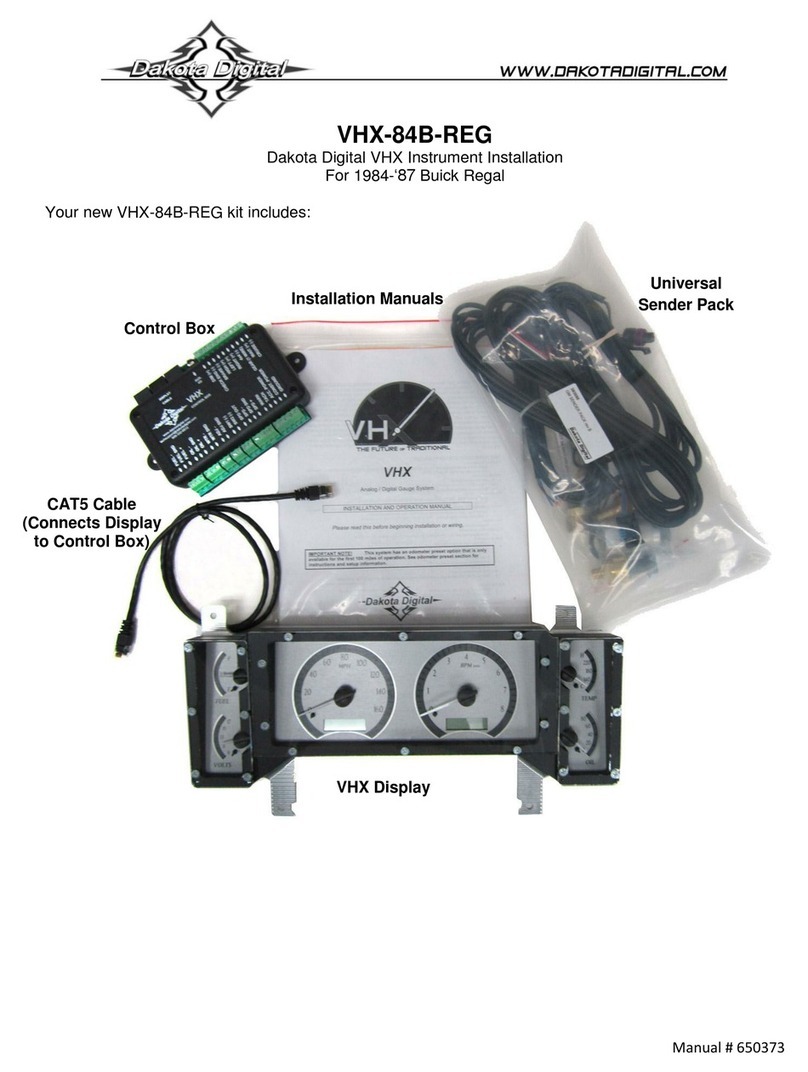
Dakota Digital
Dakota Digital VHX-84B-REG VHX-84B-REG-S-W manual
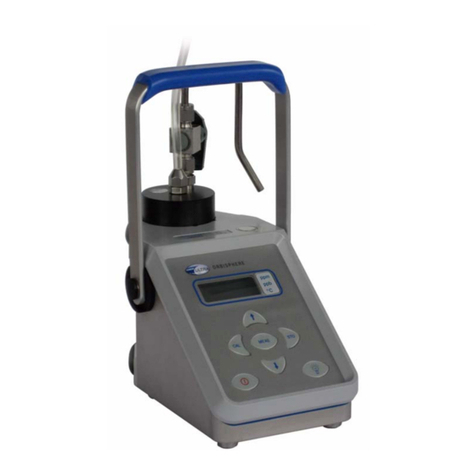
HACH LANGE
HACH LANGE ORBISPHERE 3650 user manual
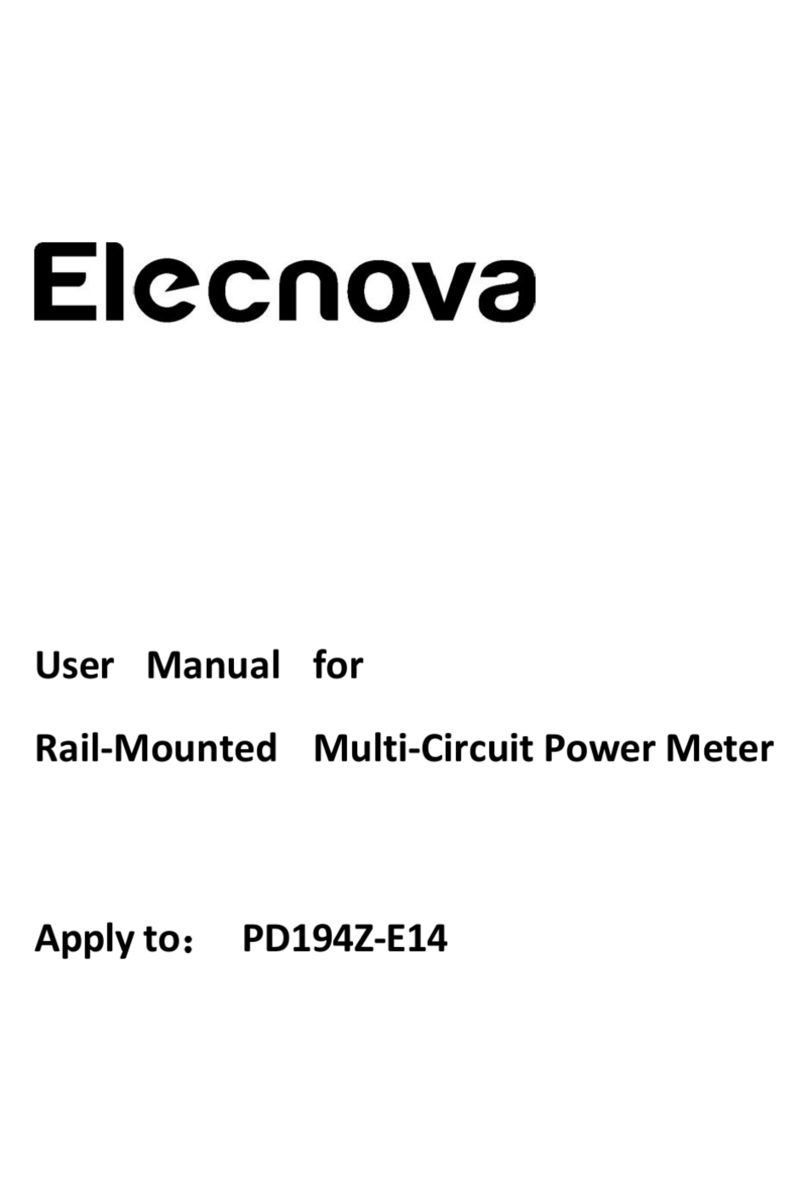
Elecnova
Elecnova PD194Z-E14 user manual

Endress+Hauser
Endress+Hauser Cleanfit CPA450 A Series operating instructions
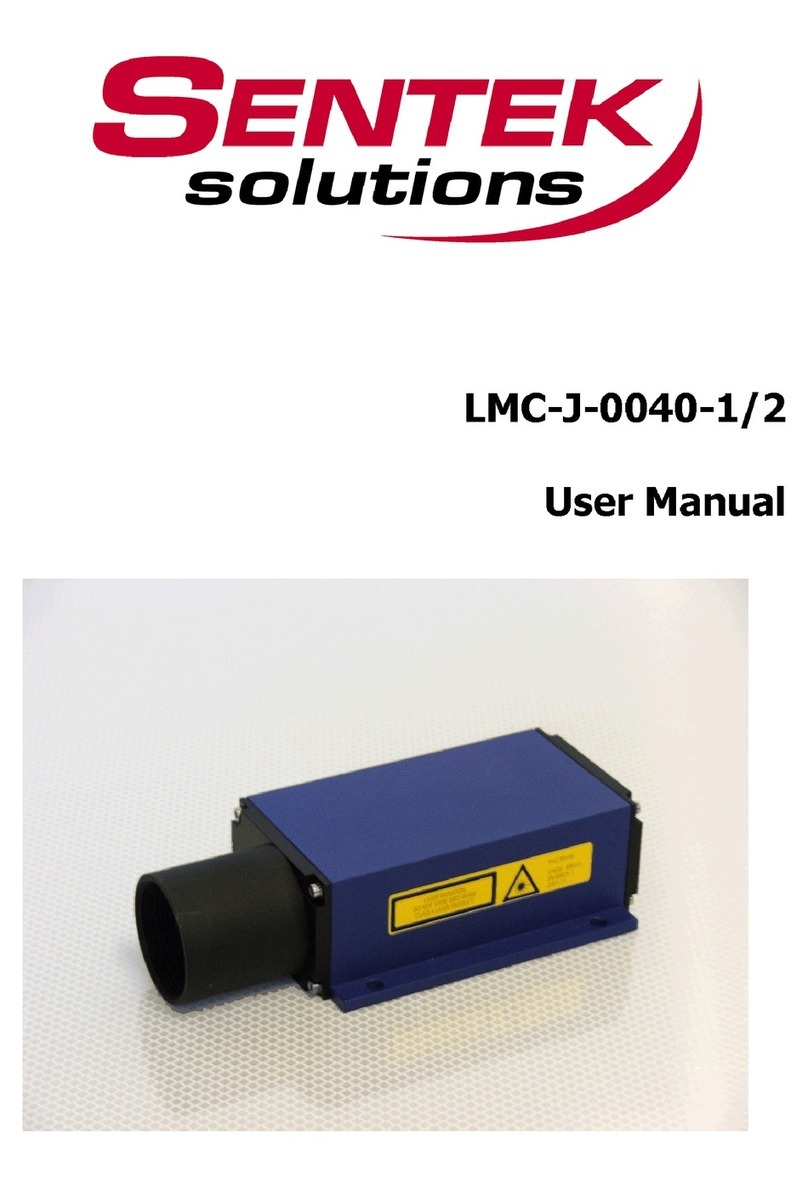
Sentek
Sentek LMC-J-0040-1 user manual
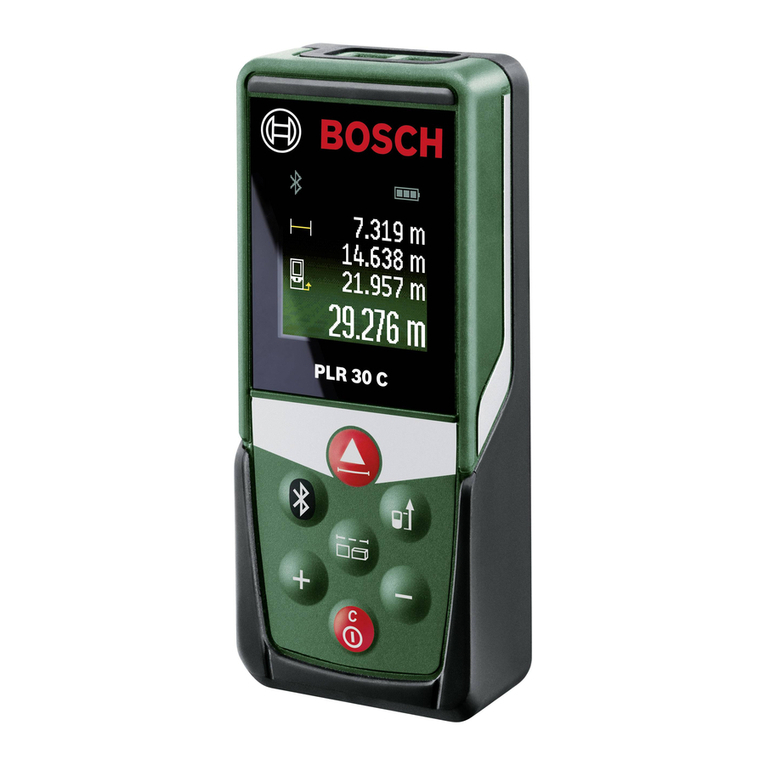
Bosch
Bosch PLR 30 C Original instructions

